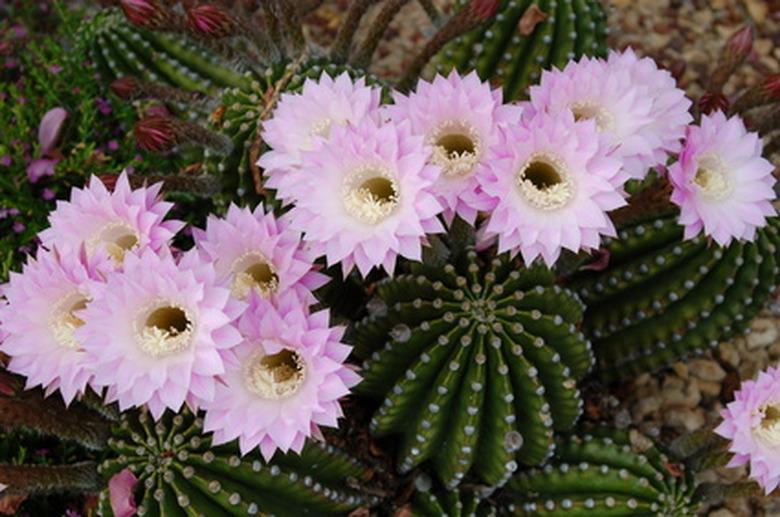How To Care For A Strawflower Cactus Plant
We may receive a commission on purchases made from links.
Cacti (family Cactaceae) make excellent indoor houseplants thanks to their hardy nature and their wide variety of different looks. In spite of the general ease of looking after them, though, it's essential that you make the right choices for your particular cactus to help it thrive and grow. One type of cactus that may require special care is a cactus with a strawflower attached. Knowing how to care for a strawflower cactus plant will ensure that yours always looks its best.
What Are Strawflower Cacti?
What Are Strawflower Cacti?
Some plant sellers attach a strawflower to the head of a cactus to make it look more exciting and to boost sales. The scientific name for the dried, strawlike flowers used is Xerochrysum bracteatum (USDA zones 8-10). These flowers are also known as the everlasting flower, everlasting daisy and paper daisy. This is because they retain their same appearance once picked and dried, making them a popular commercial dried flower. Strawflowers open further as they dry, although they usually look best when half open. These flowers have a papery texture and are usually attached using either hot glue or a pin to give the appearance of a flowering cactus.
Light, Potting Media, and Temperature
Light, Potting Media, and Temperature
Cacti are generally known to be low-maintenance houseplants. Strawflower cacti tend to be of the arid-climate cacti type, such as the golden barrel cactus (Echinocactus grusonii, zones 9-11), prickly pear (Opuntia spp.) or beehive cactus (Mammillaria spp.), which grow naturally in desert conditions. This means their placement as indoor houseplants can be key to their health and happiness. A good amount of light is essential for cacti, so a south- or west-facing windowsill is an ideal place for them to live.
Cactus plants prefer well-drained potting soil. You can use a commercial option or create one by mixing equal parts of peat-based potting soil with coarse sand or aquarium gravel, which can aid soil drainage. Waterlogging the roots of a cactus can be hugely detrimental to the plant, so it must be kept in a pot with good drainage too.
Cacti enjoy warmer temperatures in the summer, but to help them thrive, a cooler temperature during the winter months can be important. Aim for between 65 and 85 degrees Fahrenheit during the summer and 45 to 55 F in the winter months. If the climate is right, taking your cactus outside during the summer can help with growth, though you should choose an area that gets adequate shade and bring it inside if the temperature drops.
Winter and Summer Care
Winter and Summer Care
Cacti are dormant during the winter months when they require very little care. They should only be watered if you notice the plant beginning to shrivel. During the growing season between March and September, however, cacti require a little more watering — generally whenever you notice the soil beginning to dry out.
You can also fertilize your cactus during the summer growing season. Use a low-nitrogen liquid or water-soluble fertilizer designed for succulents once a month during the growing season. You can also propagate your strawflower cactus during the growing season either from seeds or from small cuttings. Don't fertilize your strawflower cactus during the dormant season.
